Showing Spotlights 353 - 360 of 2783 in category All (newest first):
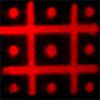 The bottleneck in atomic-scale data storage area may be broken by a simple technique, thanks to recent innovative studies. Through a simple, efficient and low-cost technique involving the focused laser beam and ozone treatment, researchers can manipulate the properties of nanomaterials, thereby 'writing' information onto monolayer materials. The result is a demonstration of the thinnest light disk with rewritable data storage and encryption functionalities at the atomic level.
The bottleneck in atomic-scale data storage area may be broken by a simple technique, thanks to recent innovative studies. Through a simple, efficient and low-cost technique involving the focused laser beam and ozone treatment, researchers can manipulate the properties of nanomaterials, thereby 'writing' information onto monolayer materials. The result is a demonstration of the thinnest light disk with rewritable data storage and encryption functionalities at the atomic level.
Jul 28th, 2021
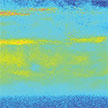 Scientists have discovered a new class of material which, when fractured, can repair themselves within milliseconds. The highly crystalline materials, when broken into pieces, can self-propel and re-join in the blink of an eye, and repair themselves so precisely that they become indistinguishable from the undisturbed materials. These new materials may find applications in various high-tech applications. During repair, fractured pieces travel with a honeybee wing-like motion with acceleration comparable to cars.
Scientists have discovered a new class of material which, when fractured, can repair themselves within milliseconds. The highly crystalline materials, when broken into pieces, can self-propel and re-join in the blink of an eye, and repair themselves so precisely that they become indistinguishable from the undisturbed materials. These new materials may find applications in various high-tech applications. During repair, fractured pieces travel with a honeybee wing-like motion with acceleration comparable to cars.
Jul 26th, 2021
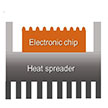 Heat dissipation has increasingly become a bottleneck for modern electronics. In particular, the development of wide bandgap semiconductor devices has led to many advancements of high power and high frequency electronics Scientists now have integrated new super thermal conductors - boron arsenide and boron phosphide that they developed recently - as a thermal substrate for power electronics devices such as gallium nitride high electron-mobility transistors. The study demonstrates high cooling performance better than the best state-of-the-art technologies.
Heat dissipation has increasingly become a bottleneck for modern electronics. In particular, the development of wide bandgap semiconductor devices has led to many advancements of high power and high frequency electronics Scientists now have integrated new super thermal conductors - boron arsenide and boron phosphide that they developed recently - as a thermal substrate for power electronics devices such as gallium nitride high electron-mobility transistors. The study demonstrates high cooling performance better than the best state-of-the-art technologies.
Jul 9th, 2021
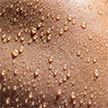 Self-charging biosupercapacitors (BSCs) that can store energy and be self-charged via chemical or solar energy conversion through bioreaction have recently attracted considerable attention. As human sweat also contains a high concentration of lactate biofuel, the harvesting and storage of the bioenergy in sweat holds the potential to provide the power for wearable electronics. A new wearable hybrid device functions as both a biofuel cell and a supercapacitor.
Self-charging biosupercapacitors (BSCs) that can store energy and be self-charged via chemical or solar energy conversion through bioreaction have recently attracted considerable attention. As human sweat also contains a high concentration of lactate biofuel, the harvesting and storage of the bioenergy in sweat holds the potential to provide the power for wearable electronics. A new wearable hybrid device functions as both a biofuel cell and a supercapacitor.
Jul 8th, 2021
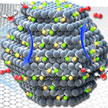 Scientists have used metal carbides as the carrier to support the transition metal Fe and Ni atoms to engineer single-atom oxygen evolution catalysts for the first time. Distinct from previous studies, this novel metal carbide support shows obvious advantages for supporting different single atoms, especially its non-strong bonding features, which resulted in high mobility of the supported atoms, which might be the key point for realizing excellent OER activities.
Scientists have used metal carbides as the carrier to support the transition metal Fe and Ni atoms to engineer single-atom oxygen evolution catalysts for the first time. Distinct from previous studies, this novel metal carbide support shows obvious advantages for supporting different single atoms, especially its non-strong bonding features, which resulted in high mobility of the supported atoms, which might be the key point for realizing excellent OER activities.
Jul 2nd, 2021
 Researchers report an in vitro and in vivo proof-of-concept for the capacity of triboelectric nanogenerator (TENG) technology to function as a simple, scalable, inexpensive, and self-powered device for tactile sensory restoration. This integrated tactile sensory restoration device powers itself and is suitable for implantation. It bypasses damaged nerves and activate sensory neurons at various levels of electrical potential, generated by different levels of tactile pressure on the implanted device.
Researchers report an in vitro and in vivo proof-of-concept for the capacity of triboelectric nanogenerator (TENG) technology to function as a simple, scalable, inexpensive, and self-powered device for tactile sensory restoration. This integrated tactile sensory restoration device powers itself and is suitable for implantation. It bypasses damaged nerves and activate sensory neurons at various levels of electrical potential, generated by different levels of tactile pressure on the implanted device.
Jul 1st, 2021
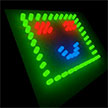 The three-dimensional (3D) geometry of 3D-printed nanopixels can increase the emission brightness of display pixels, varying with the height of the pixels, and can be used to fabricate super high-resolution devices. 3D printing of perovskite nanopillars can be used for creating nanoscale display pixels as well and the increase of the emission intensity can be saturated by the limited depth of field of the measuring optical system.
The three-dimensional (3D) geometry of 3D-printed nanopixels can increase the emission brightness of display pixels, varying with the height of the pixels, and can be used to fabricate super high-resolution devices. 3D printing of perovskite nanopillars can be used for creating nanoscale display pixels as well and the increase of the emission intensity can be saturated by the limited depth of field of the measuring optical system.
Jun 30th, 2021
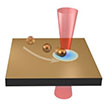 Optical tweezers used to trap nanoscale objects usually require a tightly focused laser beam with high optical intensity. The problem with all conventional laser-based optical manipulation techniques is that the laser light could cause photodamages and photothermal degradation to nanoparticles and biological samples. A novel solution to this problem creates a low-temperature spot in the solution and trap particles and molecules at the cold spot. This new technique can effectively avoid photothermal damages.
Optical tweezers used to trap nanoscale objects usually require a tightly focused laser beam with high optical intensity. The problem with all conventional laser-based optical manipulation techniques is that the laser light could cause photodamages and photothermal degradation to nanoparticles and biological samples. A novel solution to this problem creates a low-temperature spot in the solution and trap particles and molecules at the cold spot. This new technique can effectively avoid photothermal damages.
Jun 29th, 2021
 The bottleneck in atomic-scale data storage area may be broken by a simple technique, thanks to recent innovative studies. Through a simple, efficient and low-cost technique involving the focused laser beam and ozone treatment, researchers can manipulate the properties of nanomaterials, thereby 'writing' information onto monolayer materials. The result is a demonstration of the thinnest light disk with rewritable data storage and encryption functionalities at the atomic level.
The bottleneck in atomic-scale data storage area may be broken by a simple technique, thanks to recent innovative studies. Through a simple, efficient and low-cost technique involving the focused laser beam and ozone treatment, researchers can manipulate the properties of nanomaterials, thereby 'writing' information onto monolayer materials. The result is a demonstration of the thinnest light disk with rewritable data storage and encryption functionalities at the atomic level.
 Subscribe to our Nanotechnology Spotlight feed
Subscribe to our Nanotechnology Spotlight feed





